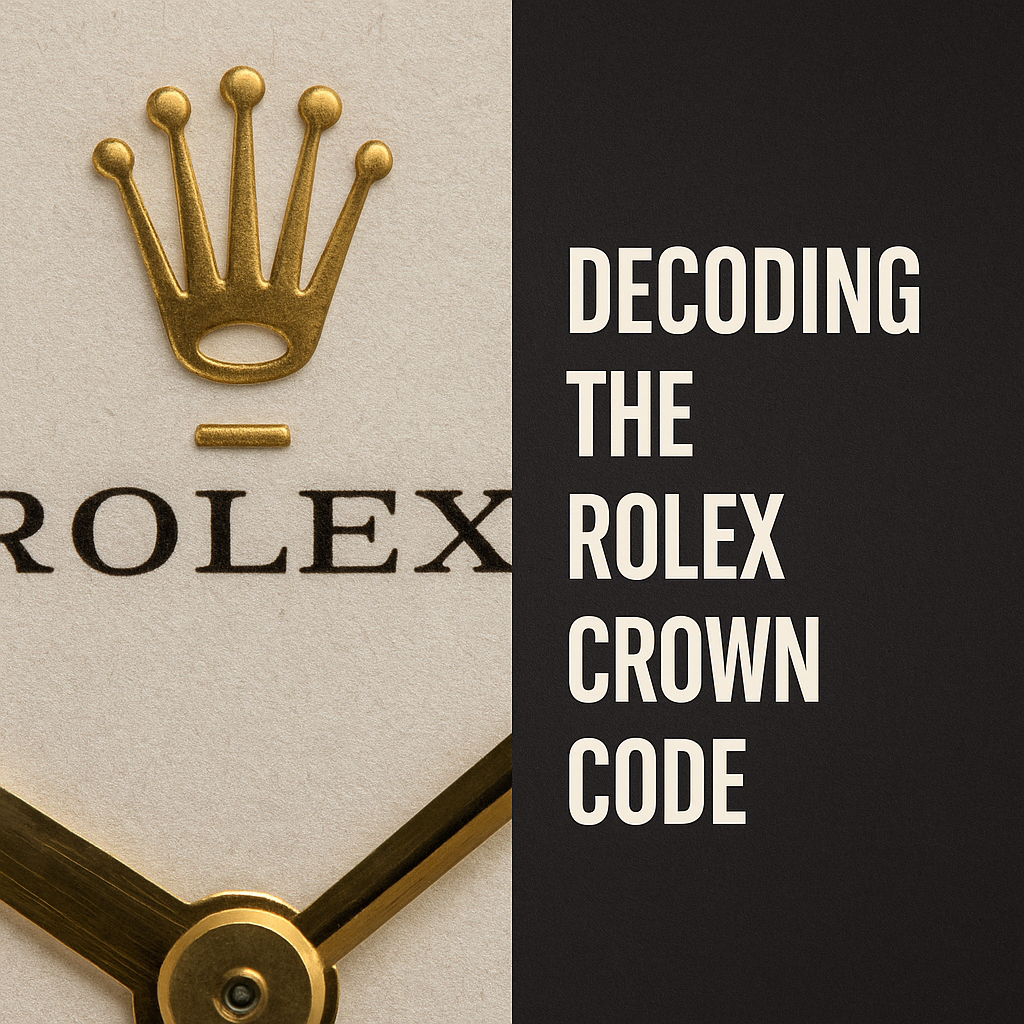Decoding the Rolex Crown Code
How a hair-thin underline, a pin-prick dot, and the rarest twin-bars became secret passports to Rolex history and value

A tiny line that changed everything
In 1963 Rolex quietly swapped highly-radioactive radium lume for far safer tritium. To flag the new formula—perhaps for watchmakers, perhaps for regulators—some dials received a hair-thin underline beneath the coronet or model name. The experiment lasted roughly one production year, yet it touched icons such as the Submariner 5513, Explorer 1016, and Day-Date 1803. Today that sliver of paint is proof you’re holding a short-run “transitional” dial from the exact moment Rolex crossed the radiation Rubicon.
How collectors read the marks (minus the table)
- No mark – Regular production; nothing unusual.
- Underline (1963-64) – Signals the radium ➜ tritium shift and, by extension, lower radiation. Seen on 5512/5513 Subs, 1016 Explorers, 1803 Day-Dates, and others.
- Single dot (1998-99) – Found on late-1990s “SWISS-only” dials when Rolex tested non-radioactive LumiNovajust before switching to “SWISS MADE.” Often crops up on Submariner 16610s, Explorer 14270s, and five-digit Datejusts.
- Double line / bar (1990s-2000s) – The murkiest mark; believed to denote certain Rolex Service Center dials or early Super-LumiNova experiments, most often on Datejusts and Day-Dates.
Because Rolex never explains its breadcrumbs, these readings rely on Geiger-meter tests, period paperwork, and thousands of side-by-side dial inspections.
Market impact in the wild
• A gilt-dial Submariner 5513 underline sold for CHF 201,600 at Phillips Geneva in 2021—well over double a comparable non-underline example.
• A Day-Date 1803 underline currently advertised by Craft & Tailored carries a 15-to-20 percent premium versus standard 1803s in similar condition.
• Neo-vintage “Swiss-only” Explorers and Submariners with the single dot routinely trade 25-to-30 percent above tritium-dial peers, thanks to that one-year LumiNova run.
Scarcity is only half the equation; collectors also prize these dials as forensic snapshots of Rolex’s evolving lume chemistry.
Separating fact from forum lore
- Geiger counts confirm the underline story—readings on radium-era dials are five-to-ten times higher than on underline pieces.
- Not every dot equals early LumiNova. Rolex Service Centers sometimes added similar marks when swapping dials, so serial-year alignment is essential.
- Bars and double lines remain speculative; too few examples exist for airtight theory, keeping prices volatile and scholarship ongoing.
Collector checklist for crown-code dials
- Magnification is mandatory—underlines measure ≈0.3 mm; dots can be smaller.
- Read the dial text: “SWISS” (no T) + underline → 1963-64; simple “SWISS” + dot → 1998-99.
- Match serial range to dial era—an underline on a 1970-series watch is a red flag.
- Check patina harmony—hands and markers should age together; mismatched colours often mean replaced parts.
- Archive everything—macro photos, auction comps, even Geiger readings; provenance is tomorrow’s liquidity.
Why it still matters
In an age of ceramic bezels and laser-etched coronets, these microscopic marks remind us that Rolex once iterated out in the open—albeit at one-third of a millimetre. They offer historical texture, verifiable rarity, and conversation-stopping bragging rights. Spotting an underline or dot in the wild is the contemporary litmus test of vintage fluency.
Final thought
Rolex may never publish an official decoder ring, but the collecting community’s living archive keeps sharpening. If a miniature line or dot lurks under your coronet, you could be wearing a time-capsule from a pivotal chapter in watchmaking chemistry.

Comments